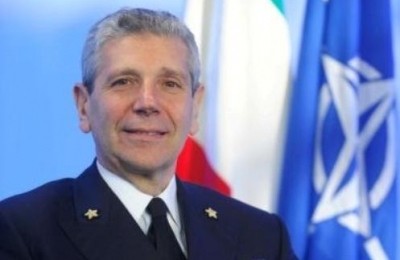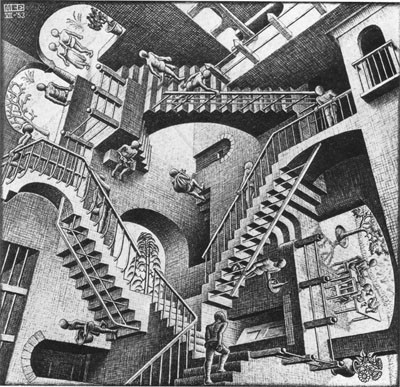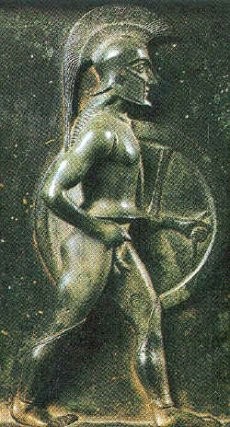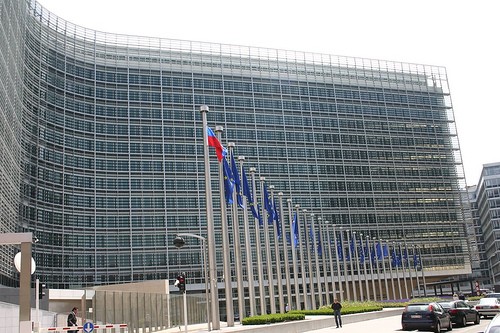
La balcanizzazione del Sudan: il ridisegno del Medio Oriente e Africa del Nord
Il Sudan è una nazione diversa e un paese che rappresenta la pluralità dell’Africa delle varie tribù, clan, etnie, gruppi religiosi. Tuttavia l’unità del Sudan è in questione, mentre si parla di nazioni unificanti e del giorno della creazione degli Stati Uniti d’Africa attraverso l’Unione africana.
La ribalta è per il referendum del gennaio 2011 in Sud Sudan. L’amministrazione Obama ha annunciato ufficialmente che sostiene la separazione del Sudan meridionale dal resto del Sudan.
La balcanizzazione del Sudan è quello che è veramente in gioco. Per anni i dirigenti ed i funzionari del Sud Sudan sono stati sostenuti dagli USA e dall’Unione europea.

La politicamente motivata demonizzazione del Sudan
Una campagna di demonizzazione importante è in corso contro il Sudan e il suo governo. È vero, il governo sudanese di Khartoum ha avuto un record negativo per quanto riguarda i diritti umani e la corruzione dello stato, e nulla poteva giustificare questo.
Per quanto riguarda il Sudan, condanne selettive o mirate sono state attuate. Ci si dovrebbe, tuttavia, chiedere perché la leadership sudanese è presa di mira dagli Stati Uniti e dall’Unione europea, mentre la situazione dei diritti umani in diversi clienti sponsorizzati dagli Stati Uniti tra cui l’Arabia Saudita, Egitto, Emirati Arabi Uniti, e l’Etiopia sono casualmente ignorate.
Khartoum è stato diffamata come una oligarchia autocratica colpevole di genocidio mirato sia in Darfur e Sud Sudan. Questa attenzione deliberata sullo spargimento di sangue e l’instabilità nel Darfur e nel Sud Sudan è politica e motivata dai legami di Khartoum con gli interessi petroliferi cinesi.
Il Sudan fornisce alla Cina una notevole quantità di petrolio. La rivalità geo-politica tra Cina e Stati Uniti per il controllo delle forniture energetiche mondiali e africane, è il vero motivo per il castigo del Sudan e il forte sostegno dimostrato dagli Stati Uniti, dall’Unione europea e dagli ufficiali israeliani alla secessione nel Sud Sudan.
E’ in questo contesto che gli interessi cinesi sono stati attaccati. Ciò include l’attacco dell’ottobre 2006 alla Greater Nile Petroleum Company di Defra, Kordofan, da parte della milizia del Justice and Equality Movement (JEM).
Distorcere le violenze in Sudan
Mentre c’è una crisi umanitaria in Darfur e un forte aumento del nazionalismo regionale nel Sudan meridionale, le cause profonde del conflitto sono stati manipolate e distorte. Le cause di fondo della crisi umanitaria in Darfur e il regionalismo nel Sud Sudan sono intimamente collegate a interessi strategici ed economici. Se non altro, l’illegalità e i problemi economici sono i veri problemi, che sono stati alimentati da forze esterne.
Direttamente o tramite proxy (pedine) in Africa, gli Stati Uniti, l’Unione europea e Israele sono i principali architetti degli scontri e dell’instabilità sia in Darfur che in Sud Sudan. Queste potenze straniere hanno finanziato, addestrato e armato le milizie e le forze di opposizione al governo sudanese in Sudan. Esse scaricano la colpa sulle spalle di Khartoum per qualsiasi violenza, mentre esse stesse alimentano i conflitti al fine di controllare le risorse energetiche del Sudan. La divisione del Sudan in diversi stati è parte di questo obiettivo. Il Supporto al JEM, al Sud Sudan Liberation Army (SSLA) e alle altre milizie che si oppongono al governo sudanese da parte degli Stati Uniti, dell’Unione europea e d’Israele è orientato al raggiungimento dell’obiettivo di dividere il Sudan.
E’ anche un caso che per anni, Stati Uniti, Gran Bretagna, Francia, e l’intera UE, con la scusa dell’umanitarismo stiano spingendo al dispiegamento di truppe straniere in Sudan. Hanno attivamente sostenuto il dispiegamento di truppe NATO in Sudan sotto la copertura di un mandato di peacekeeping delle Nazioni Unite.
Si tratta della rievocazione delle stesse modalità utilizzate dagli Stati Uniti e dall’Unione europea in altre regioni, in cui i paesi sono stati suddivisi a livello informale o formale e le loro economie ristrutturate dai proxy installati da governi stranieri, sotto la presenza di truppe straniere. Questo è quello che è successo nella ex Jugoslavia (attraverso la creazione di numerose nuove repubbliche) e nell’Iraq occupato dagli anglo-statunitensi (attraverso la balcanizzazione soft tramite una forma di federalismo calcolato, volto a definire uno stato debole e de-centralizzato). Le truppe straniere e una presenza straniera hanno fornito la cortina per lo smantellamento dello stato e l’acquisizione estera delle infrastrutture, risorse ed economie pubbliche.
La questione dell’identità in Sudan
Mentre lo stato sudanese è stato dipinto come oppressivo nei confronti del popolo del Sud Sudan, va osservato che sia il referendum che la struttura di condivisione del potere del governo sudanese, rappresentano qualcos’altro. L’accordo per la condivisione del potere a Khartoum tra Omar Al-Basher, il presidente del Sudan, include il SPLM. Il leader del SPLM, Salva Kiir Mayardit, è il primo vicepresidente del Sudan e presidente del Sud Sudan.
La questione etnica è stata anche portata alla ribalta dal nazionalismo regionale o etno-regionale che è stato coltivato in Sud Sudan. La scissione in Sudan tra i cosiddetti arabi sudanesi e i cosiddetti africani sudanesi è stata presentata al mondo come la forza principale del nazionalismo regionale che motivatamente chiede di fondare uno Stato in Sud Sudan. Nel corso degli anni, questa auto-differenziazione è stata diffusa e socializzata nella psiche collettiva delle popolazioni del Sud Sudan.
Eppure, le differenze tra i cosiddetti sudanesi arabi e i cosiddetti africani sudanesi non sono un granché. L’identità araba dei cosiddetti arabi sudanesi si basa principalmente sull’uso della loro lingua araba. Supponiamo anche che le identità etniche sudanesi sono totalmente separate. E’ ancora noto, in Sudan, che entrambi i gruppi sono molto eterogenei. L’altra differenza tra il Sud Sudan e il resto del Sudan è che l’Islam predomina nel resto del Sudan e non in Sud Sudan. Entrambi i gruppi sono ancora profondamente legati l’uno all’altro, tranne che per un senso di auto-identificazione, che è ben nel loro diritto avere. Eppure, sono proprio queste diverse identità su cui si è giocato da parte dei leader locali e delle potenze straniere.
La negligenza della popolazione locale di diverse regioni, da parte delle élites del Sudan, è la causa principale dell’ansia o dell’animosità realmente motivate tra le persone nel Sud Sudan e il governo di Khartoum, e non le differenze tra i cosiddetti arabi e i cosiddetti africani sudanesi.
Il favoritismo regionale ha operato in Sud Sudan.
La questione è anche aggravata dalla classe sociale. Il popolo del Sud Sudan crede che la sua condizione economica e tenore di vita migliorerà se formerà una nuova repubblica. Il governo di Khartoum e i sudanesi non-meridionali sono stati usati come capri espiatori per le miserie economiche del popolo del Sud Sudan e della loro percezione della povertà relativa da parte della leadership locale del Sud Sudan. In realtà, i funzionari locali del Sudan meridionale non miglioreranno le condizioni di vita delle popolazioni del Sud Sudan, ma manterranno uno status quo cleptocratico. [1]
Il progetto a lungo termine per balcanizzare il Sudan e i suoi collegamenti con il mondo arabo
In realtà, il progetto di balcanizzazione del Sudan è in corso dalla fine del dominio coloniale britannico nel Sudan anglo-egiziano. Sudan ed Egitto sono stati un paese solo per molti differenti periodi. Sia l’Egitto che il Sudan sono stati anche un paese, in pratica fino al 1956.
Fino alla indipendenza del Sudan, c’era un forte movimento per mantenere l’Egitto e il Sudan uniti come un unico stato arabo, che stava lottando contro gli interessi britannici. Londra, tuttavia, alimentò il regionalismo sudanese contro l’Egitto, e nello stesso modo il regionalismo è al lavoro nel Sud Sudan contro il resto del Sudan. Il governo egiziano è stato raffigurato nello stesso modo di come lo è oggi Khartoum. Gli egiziani sono stati dipinti come sfruttatori dei sudanesi, come i sudanesi non-meridionali sono stati dipinti come sfruttatori dei sudanesi del sud.
Dopo l’invasione britannica di Egitto e Sudan, gli inglesi riuscirono anche a mantenere le loro truppe di stanza in Sudan. Anche mentre lavoravano per dividere il Sudan dall’Egitto, i britannici hanno lavorato per creare differenziazioni interne tra il Sud Sudan e il resto del Sudan. Ciò è stato fatto attraverso il condominio anglo-egiziano del 1899-1956, che costrinse l’Egitto a condividere il Sudan con la Gran Bretagna dopo le rivolte mahdiste. Alla fine, il governo egiziano avrebbe rifiutato di riconoscere il condominio anglo-egiziano come legale. Il Cairo avrebbe continuamente chiesto agli inglesi di porre fine alla loro occupazione militare illegale del Sudan e di smettere di impedire la re-integrazione di Egitto e Sudan, ma gli inglesi si rifiuteranno.
Sarà sotto la presenza delle truppe britanniche che il Sudan si sarebbe dichiarato indipendente. Questo è ciò che porterà alla nascita del Sudan come una stato arabo e africano separato dall’Egitto. Così, il processo di balcanizzazione è iniziato con la divisione del Sudan dall’Egitto.
Il Piano Yinon al lavoro in Sudan e nel Medio Oriente
La balcanizzazione del Sudan è legato anche al Piano Yinon, che è la continuazione dello stratagemma britannico. L’obiettivo strategico del Piano Yinon è quello di garantire la superiorità israeliana attraverso la balcanizzazione del Medio Oriente e degli stati arabi, in stati più piccoli e più deboli. E’ in questo contesto che Israele è stato profondamente coinvolto in Sudan. Gli strateghi israeliani videro l’Iraq come la loro più grande sfida strategica da uno stato arabo. È per questo che l’Iraq è stato delineato come il pezzo centrale per la balcanizzazione del Medio Oriente e del mondo arabo.The Atlantic, in questo contesto, ha pubblicato un articolo nel 2008 di Jeffrey Goldberg “Dopo l’Iraq: sarà così il Medio Oriente?” [2] In questo articolo di Goldberg, una mappa del Medio Oriente è stato presentato, che seguiva da vicino lo schema del Piano Yinon e la mappa di un futuro in Medio Oriente, presentato dal Tenente-colonnello (in pensione) Ralph Peters, nell’Armed Forces Journal delle forze armate degli Stati Uniti, nel 2006.
Non è neanche un caso che da un Iraq diviso a un Sudan diviso, comparivano sulla mappa. Libano, Iran, Turchia, Siria, Egitto, Somalia, Pakistan e Afghanistan erano presentati anch’esse come nazioni divise. Importante, nell’Africa orientale nella mappa, illustrata da Holly Lindem per l’articolo di Goldberg, l’Eritrea è occupata dall’Etiopia, un alleato degli Stati Uniti e d’Israele, e la Somalia è divisa in Somaliland, Puntland, e una più piccola Somalia.
In Iraq, sulla base dei concetti del Piano Yinon, gli strateghi israeliani hanno chiesto la divisione dell’Iraq in uno stato curdo e due stati arabi, una per i musulmani sciiti e l’altra per i musulmani sunniti. Ciò è stato ottenuto attraverso la balcanizzazione morbida del federalismo nell’Iraq, che ha permesso al Governo regionale del Kurdistan di negoziare con le compagnie petrolifere straniere per conto suo. Il primo passo verso l’istituzione di ciò fu la guerra tra Iraq e Iran, che era discussa nel Piano Yinon.
In Libano, Israele ha lavorato per esasperare le tensioni settarie tra le varie fazioni cristiane e musulmane, nonché i drusi. La divisione del Libano in diversi stati è anche visto come un mezzo per balcanizzare la Siria in piccoli diversi stati arabi settari. Gli obiettivi del Piano Yinon sono di dividere il Libano e la Siria in diversi stati sulla base dall’identità religiosa e settaria per i musulmani sunniti, sciiti, cristiani e drusi.
A questo proposito, l’assassinio di Hariri e il Tribunale speciale per il Libano (STL) giocano a favore di Israele, creando divisioni interne nel Libano e alimentando il settarismo politico. Questo è il motivo per cui Tel Aviv è stato assaiu favorevole al TSL e l’appoggia assai attivamente. In un chiaro segno della natura politicizzata del TSL e dei suoi legami con la geo-politica, gli Stati Uniti e la Gran Bretagna hanno anche dato al TSL milioni di dollari.
I legami tra gli attacchi contro i copti egiziani e il referendum in Sud Sudan
Dall’Iraq all’Egitto, i cristiani in Medio Oriente sono sotto attacco, mentre le tensioni tra musulmani sciiti e sunniti sono alimentate. L’attacco a una chiesa copta di Alessandria, il 1° gennaio 2011, o le successive proteste e rivolte copte non dovrebbero essere considerati isolatamente. [3] Né la furia successiva dei cristiani copti espressasi nei confronti dei musulmani e del governo egiziano. Questi attacchi contro i cristiani sono legati ai più ampi obiettivi geo-politica di Stati Uniti, Gran Bretagna, Israele e NATO sul Medio Oriente e sul mondo arabo.
Il Piano Yinon precisa che se l’Egitto viene diviso, il Sudan e la Libia sarebbero anch’esse balcanizzate e indebolite. In questo contesto, vi è un legame tra il Sudan e l’Egitto. Secondo il Piano Yinon, i copti o cristiani d’Egitto, che sono una minoranza, sono la chiave per la balcanizzazione degli stati arabi del Nord Africa. Così, secondo il piano Yinon, la creazione di uno stato copto in Egitto (sud Egitto) e le tensioni cristiani-musulmani in Egitto, sono dei passi essenziali per balcanizzare il Sudan e il Nord Africa.
Gli attacchi ai cristiani in Medio Oriente sono parte delle operazioni di intelligence destinata a dividere il Medio Oriente e il Nord Africa. La tempistica degli attacchi crescenti ai cristiani copti in Egitto e il processo per il referendum nel Sud Sudan, non è una coincidenza. Gli eventi in Sudan ed Egitto sono collegati l’uno all’altro e sono parte del progetto per balcanizzare il mondo arabo e il Medio Oriente. Essi devono anche essere studiati in collaborazione con il Piano Yinon e con gli eventi in Libano e in Iraq, nonché in relazione agli sforzi per creare un divario sunniti-sciiti.
Le connessioni esterne di SSLA, SPLM e milizie nel Darfur
Come nel caso del Sudan, l’interferenza o l’intervento sono stati usati per giustificare l’oppressione dell’opposizione interna. Nonostante la corruzione, Khartoum è stata sotto assedio per aver rifiutato di essere semplicemente un proxy. Il Sudan s’è giustificato sospettando le truppe straniere e accusando Stati Uniti, Gran Bretagna e Israele di erodere la solidarietà nazionale del Sudan. Per esempio, Israele ha inviato armi ai gruppi di opposizione e ai movimenti separatisti in Sudan. Ciò è stato fatto attraverso l’Etiopia per anni, fino a quando l’Eritrea è diventata indipendente dall’Etiopia, che ha fatto perdere all’Etiopia l’accesso al Mar Rosso, e fatto sviluppare cattive relazioni tra gli etiopi e gli eritrei. In seguito le armi israeliane sono entrate nel Sud Sudan dal Kenya. Dal Sud Sudan, il People’s Liberation Movement del Sud Sudan (SPLM), che è il braccio politico del SSLA, avrebbe ceduto le armi alle milizie nel Darfur. I governi di Etiopia e Kenya, così come l’Uganda People’s Defence Force(UPDF), hanno anche lavorato a stretto contatto con Stati Uniti, Gran Bretagna e Israele in Africa orientale.
Il grado d’influenza israeliana nell’opposizione sudanese e nei gruppi separatisti è significativo. Il SPLM ha forti legami con Israele e suoi membri e sostenitori regolarmente visitano Israele. È grazie a questo, che Khartoum ha capitolato e ha rimosso le restrizioni ai passaporti sudanesi per le visita in Israele, alla fine del 2009, per soddisfare il SPLM. [4] Salva Kiir Mayardit ha anche detto che il Sud Sudan riconoscerà Israele quando sarà separato dal Sudan.
The Sudan Tribune ha riferito, il 5 marzo 2008, che gruppi separatisti in Darfur e nel Sudan meridionale aveva uffici in Israele:
I sostenitori di Israele [del Movimento di liberazione del Popolo del Sudan ] hanno annunciato la costituzione della sede in Israele del Sudan People’s Liberation Movement, ha detto oggi un comunicato stampa.
“Dopo consultazioni con i leader della SPLM a Juba, i sostenitori del SPLM in Israele hanno deciso di istituire l’ufficio del SPLM in Israele”. Detto [sic.] un comunicato ricevuto via email da Tel Aviv, firmato dalla segreteria dell’SLMP in Israele. La dichiarazione ha detto che l’ufficio avrebbe promosso le politiche e la visione del SPLM nella regione. Ha inoltre aggiunto che, in conformità con il Comprehensive Peace Agreement, lo SPLM ha il diritto di aprire uffici in qualsiasi paese, compreso Israele. Ha inoltre segnalato che ci sono circa 400 sostenitori dell’SPLM in Israele. Il leader dei ribelli del Darfur, Abdel Wahid al-Nur ha detto la scorsa settimana, che ha aperto un ufficio a Tel Aviv. [5]”
Il dirottamento del referendum del 2011 in Sud Sudan
Cosa è successo al sogno di un’Africa unita o di un mondo arabo unito? Il Panarabismo, un movimento di unità di tutti i popoli di lingua araba, ha avuto pesanti perdite, come nell’unità africana. Il mondo arabo e l’Africa sono stati costantemente balcanizzati.
La secessione e balcanizzazione in Africa orientale e nel mondo arabo sono nei piani degli Stati Uniti, d’Israele e della NATO.
L’insurrezione della SSLA è stata segretamente sostenuta da Stati Uniti, Gran Bretagna e Israele dagli anni ’80. La formazione di un nuovo stato in Sudan non è destinata a servire gli interessi del popolo del Sud Sudan. Fa parte di un più ampio programma geo-strategico mirato al controllo del Nord Africa e del Medio Oriente.
Il conseguente processo di “democratizzazione” che porta fino al referendum del Gennaio 2011, serve gli interessi delle compagnie petrolifere anglo-statunitensi e alla rivalità contro la Cina. Questo avviene a detrimento della vera sovranità nazionale in Sud Sudan.
Mahdi Darius Nazemroaya è un ricercatore associato del Centre for Research on Globalization (CRG).
NOTE
[1] una cleptocrazia è un governo e/o stato che lavora per proteggere, estendere, approfondire, continuare e consolidare la ricchezza della classe dirigente.
[2] Jeffrey Goldberg, “After Iraq: What Will The Middle East Look Like?” The Atlantic, gennaio/febbraio 2008.
[3] William Maclean, “Copts on global Christmas alert after Egypt bombing”, Reuters, 5 gennaio 2011.
[4] “Sudan removes Israel travel ban from new passport”, Sudan Tribune, 3 ottobre 2009:
[5] “Sudan’s SPLM reportedly opens an office in Israel – statement”, Sudan Tribune, 5 marzo 2008:
http://www.sudantribune.com/spip.php?page=imprimable&....
ALLEGATO: La mappa del “Nuovo Medio Oriente” del The Atlantic
Nota: la seguente mappa è stata disegnata da Holly Lindem per un articolo di Jeffrey Goldberg. E’ stata pubblicata su The Atlantic di gennaio/febbraio 2008. (Copyright: The Atlantic, 2008). 
Fonte: Global Research
http://globalresearch.ca/PrintArticle.php?articleId=22736
Traduzione di Alessandro Lattanzio
http://www.sudantribune.com/spip.php?iframe&page=impr...
di Mahdi Darius Nazemroaya - 27/01/2011
Fonte: eurasia [scheda fonte]





 del.icio.us
del.icio.us
 Digg
Digg La recente morte dello storico americano John Patrick Diggins ci offre il destro per alcune considerazioni circa l’argomento del suo studio più noto in Italia, L’America, Mussolini e il fascismo, ormai fuori commercio da anni, in quanto pubblicato da Laterza nel lontano 1982, ma originariamente uscito dieci anni prima col titolo Mussolini and Fascism: The View from America, a cura dell’Università di Princeton. Quello di Diggins è un libro famoso, tradotto in molte lingue, ed è stato un po’ l’apripista della scarna bibliografia sui rapporti tra USA e Italia fascista e sull’attività delle organizzazioni del PNF nella repubblica stellata. Ai tempi fecero scandalo, nel provinciale antifascismo nostrano, alcune riflessioni di Diggins sulla generale simpatia mostrata in America per l’avvento al potere di Mussolini, in virtù della sua politica sociale e, soprattutto, in virtù del suo rivoluzionario disegno antropologico di mutare gli Italiani da turba di straccioni emigranti, facili al coltello e al crimine – di cui negli USA si aveva sin dall’Ottocento una sprezzante opinione, venata di non secondarie inflessioni razziste – finalmente in un popolo serio, moderno e disciplinato.
La recente morte dello storico americano John Patrick Diggins ci offre il destro per alcune considerazioni circa l’argomento del suo studio più noto in Italia, L’America, Mussolini e il fascismo, ormai fuori commercio da anni, in quanto pubblicato da Laterza nel lontano 1982, ma originariamente uscito dieci anni prima col titolo Mussolini and Fascism: The View from America, a cura dell’Università di Princeton. Quello di Diggins è un libro famoso, tradotto in molte lingue, ed è stato un po’ l’apripista della scarna bibliografia sui rapporti tra USA e Italia fascista e sull’attività delle organizzazioni del PNF nella repubblica stellata. Ai tempi fecero scandalo, nel provinciale antifascismo nostrano, alcune riflessioni di Diggins sulla generale simpatia mostrata in America per l’avvento al potere di Mussolini, in virtù della sua politica sociale e, soprattutto, in virtù del suo rivoluzionario disegno antropologico di mutare gli Italiani da turba di straccioni emigranti, facili al coltello e al crimine – di cui negli USA si aveva sin dall’Ottocento una sprezzante opinione, venata di non secondarie inflessioni razziste – finalmente in un popolo serio, moderno e disciplinato.







.jpg)



 In questo articolo prenderemo in considerazione l’importanza rivestita dalla
In questo articolo prenderemo in considerazione l’importanza rivestita dalla 

 In 1814, at the end of the Napoleonic wars, Benjamin Constant wrote with relief: “We have arrived at the age of commerce, the age that must necessarily replace that of war, as the age of war necessarily had to precede it.” Naïve Benjamin! He took up the very widespread idea of indefinite progress supporting the advent of peace between men and nations.
In 1814, at the end of the Napoleonic wars, Benjamin Constant wrote with relief: “We have arrived at the age of commerce, the age that must necessarily replace that of war, as the age of war necessarily had to precede it.” Naïve Benjamin! He took up the very widespread idea of indefinite progress supporting the advent of peace between men and nations..jpg)









